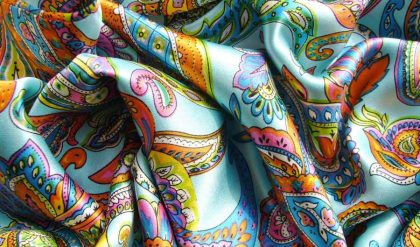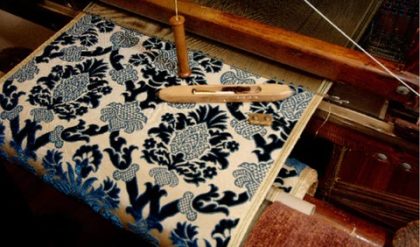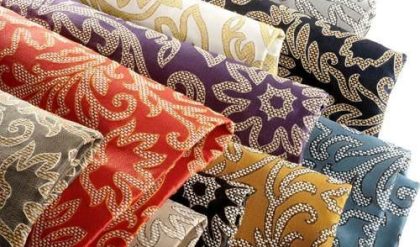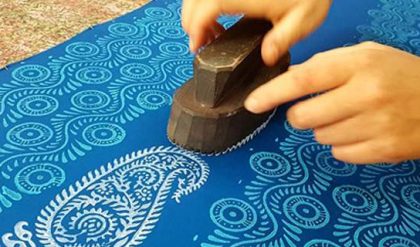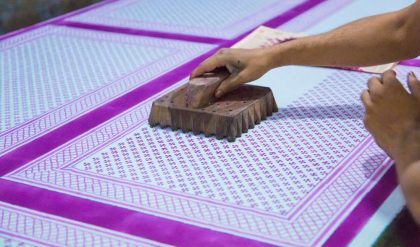Knitted fabrics are described as structures produced by the interloping of yarns. Knitting has been a traditional method of producing items such as sweaters, underwear, hosiery and baby blankets. A single yarn or several yarns may be used to for the loops. Loops are formed, and then new loops are drawn through the previously formed loops. The continuous addition of new loops creates the knitted fabric. Apart from using hand knitting needles, commercially knitted fabrics are constructed on knitting machines. Basic terms used to describe knits are:
Wale: Vertical column of loops. These can be compared to the warp yarns of the woven
Courses: horizontal row of loops. These can be compared to the weft yarns of the woven.
Stitch: each single loop is called a stitch Count: Total number of wales and courses per square inch of knitted fabric
Gauge: fineness of the fabric given by the number of stitches/ needles per unit width of the machine

Types of Knit
Weft Knits
Is a type of knitting in which yarns run horizontally from side to side across the width of the fabric. Hand knitting is a weft knitting procedure. All stiches in a course are formed by one yarn. Weft knits are made as either flat or open width fabrics (like woven fabrics) on Flat bed knitting machines, or as tubular fabrics (like seamless vests or socks) on circular knitting machines
Warp Knits
It is used for making flat width fabrics. Warp knitting produces a vertical loop structure. The yarns form a vertical loop in one course and then move diagonally to the next wale to make a loop in the following course. The yarns zigzag from side to side along the length of the fabric. Each stitch in a course is made by a different yarn. There is usually one yarn for each knitting needle. The warp knits produce fabrics such as tricot, raschel etc. Jacquard attachment can also be used to create variations
Common Knit Fabrics
Jersey: is also known as single knit. Fabrics of this type have all loops drawn to one side of the fabric and are most easily recognized by the fact that the smooth side is the face and the back has textured or mottled appearance. It has low stretch in the width and curls at the edges Rib knits: they have lengthwise ribs alternating on the face and back.
To identify rib knit fabrics it may be necessary to stretch the fabric width wise. The appearance of alternating columns of plain stitches in the lengthwise direction is evidence of a rib knit. Rib knit lie flat and do not curl like the jersey knits. Rib knits have greater elasticity in the width than the length and are often utilized for cuffs, neck lines, collars, sweater bottoms etc.
Interlock: it is a variation of rib knits and appears like two fabrics knitted back to back. These fabrics have low stretch, better shape retention and are easier to cut and sew. Jacquard knits: they have intricate pattern and design similar to the woven jacquards Pique: it resembles a miniature honeycomb pattern and is usually seen in sportswear
